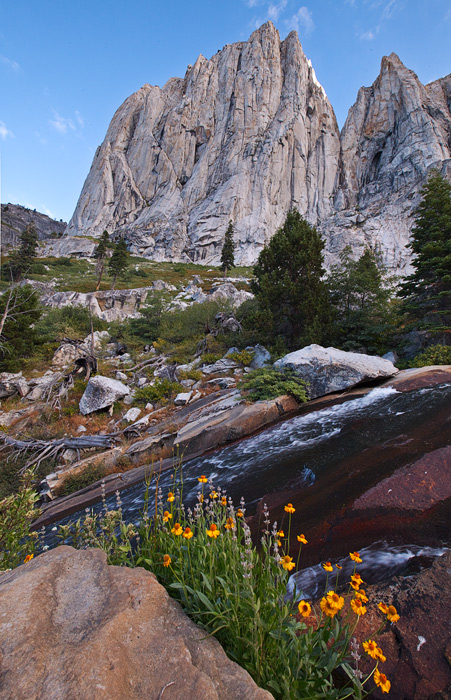Many of my new images feature some rarely photographed slot canyons in Utah and it got me thinking about more tips to share with you regarding this specialized type of photography. I’ve written on this subject before and I hope this post builds and expands on the information I’ve shared with you in the past. Without further adieu…
Patiently Study Your Subject Matter – One of the best things about photographing slot canyons is the light is always changing. Furthermore, it’s sometimes better in the middle of the afternoon. How cool is that? What I am getting at here is if you don’t have to worry about crowds of people (A.K.A you are not photographing Antelope Canyon.) Then you’ve got time to work the area you are in for the best possible composition. For instance, take this picture…

2 images blended for dynamic range. The primary image captured at F/22, ISO 160 and 2.5 second exposure.
While I am certainly pleased with the finished product, in actuality I struggled quite a bit with this composition. In fact, I’d estimate I spent nearly 45 minutes here before I actually found something that I could use! Again, what’s my point? Just to be patient. Take your time. Unless it’s partially cloudy day and the sky is moving fast you should have time to work your subject without worrying about the light disappearing in a matter of seconds or minutes. That brings me to my next point…
Relax – I don’t know about you but I can get worked up especially when I am in front of a scene that I know is special. My adrenaline is pumping – maybe it’s a difficult hike, a precarious ledge, or a tight squeeze – whatever the situation is just try to chill. Think about what you are doing and be in the moment. Finally…
Get A Good Guidebook and Read It – To find the best locations, perusing the Internet for information is not the best solution. You need to be Johnny on the spot. (Either that or you can hire me) These locations are remote, difficult to find, and even a good guidebook sometimes doesn’t paint an accurate picture as to what you’ll find when you do get there. (If the directions are even accurate.) My point is this – you need some handy dandy reference material when you are out driving around.
Studying maps, researching locations online – that stuff is all helpful to a certain point, but if you are not familiar with the location, you are going to need reference materials when you are out in the field. Otherwise, you are not going to truly comprehend what you are reading because you are not familar with the area. Heck, I’ve spent hours online just researching guidebooks! Let alone reading them. Count on spending many hours pouring over the fine print to find that needle in a haystack.
The good news is this can be done from where you sleep in the back of your car, at the trail head, or from a toilet seat in your hotel room. Just remember to bring the book with you on your trip. I know this sounds stupid, but when you start accruing guidebooks and you bring 3 or 4 along – it’s easy to forget one. I forgot probably my best guidebook for this trip!
I know these “tips” sound like overstating the obvious, but Don’t Take Your Time For Granted. Maximize It!
To see more of my images please check out my new release gallery found here http://www.wildmoments.net/gallery/new_releases/ and as always – I’d love to hear your thoughts!











